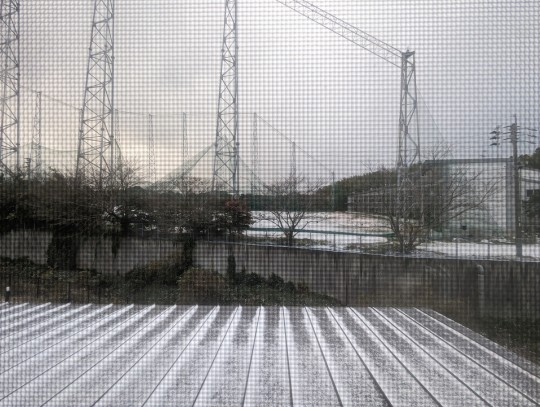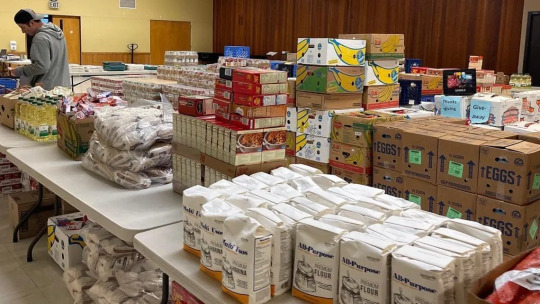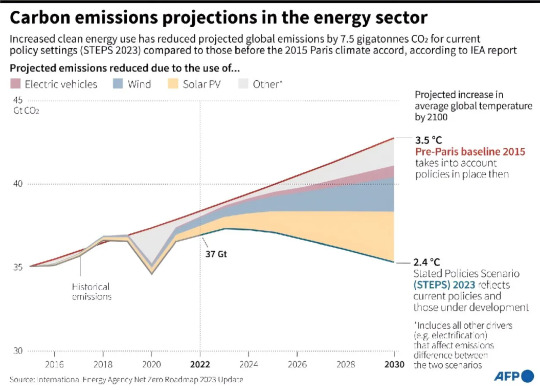#reduce fossil fuels
Text
New Record
On Monday and Tuesday, the Earth experienced the hottest Global Temperature recorded.
How much hotter must it get for something to be done? How many ecosystems must be damaged? How many people have to suffer? How much more?
Are fossil fuels really worth all this damage? Is it so inconvenient to change our ways that we are willing to let the world burn? Is it really worth it?
What will it take for there to be change?
#climate change#climate crisis#awareness#global warming#stop climate change#fyp#change is needed#we need to change#reduce fossil fuels#fossil fuels#Global temperature#Rising temperatures
10 notes
·
View notes
Link
Climate pledges made by countries around the world would collectively require 1.2 billion hectares (about 3 billion acres) of land – a total land area larger than the United States – to meet targets laid out in national plans, researchers found in the new study. It is simply not a feasible or advisable endeavor, according to the study, The Land Gap Report.
Land is a common element in climate schemes because carbon dioxide removed from the atmosphere and stored by forests and other ecosystems is calculated to offset emissions produced elsewhere. Restoration of degraded ecosystems would account for close to half of the land area required to meet climate pledges, but more than half would require lands that are already currently used for something else, the study authors noted.
Using those “new” lands for reforestation or other land-use change measures could displace Indigenous peoples, communities, or small farmers.
[...]
“This study reveals that countries’ climate pledges are dangerously over-reliant on inequitable and unsustainable land-based measures to capture and store carbon,” said Kate Dooley, lead author of the report.
“Clearly, countries are loading up on land pledges to avoid the hard work of steeply reducing emissions from fossil fuels, decarbonizing food systems and stopping the destruction of forests and other ecosystems,” Dooley, a researcher at the University of Melbourne, said in a statement.
#climate change#conservation#cop27#fossil fuels#indigenous#tl;dr rich countries need to reduce emissions and resource use instead of landgrabbing to 'offset' their atmospheric colonisation
444 notes
·
View notes
Text
"In October, Vicki Hollub, CEO of Occidental, one of the largest operators there, promised yet more production in a basin that Bloomberg last year described as “uniquely positioned to become the world’s most important growth engine for oil production.”
Did nobody tell them about climate change? " @Yale Environment 360
#Climate Change#Fossil Fuel Phase-Out#UN Climate Negotiations#Yale E360#Yale Climate Communications#Protect The Planet#There Is No Planet B#Spaceship Earth#Reduce Reuse Recycle ReTHINK#Clean Energy NOW#COP28 conference
18 notes
·
View notes
Text
I'm going to be honest, I think banning disposable vapes is going to send smoking rates through the roof. Especially among minors
#like a kid getting cigarettes is way more feesible than getting a resuable vape#a thing they have to ask their parents for#but these kids are addicted so theyre going to get it somewhere#i am also not really ok with that much power being in the governments hands#my anarchist brain does not like that shit one bit#just genuinely think about that industry and how many jobs have just been lost or endangered#plus i honestly dont think we should stop adults doing shit because its bad for kids#stricter laws sure. trying to reduce kids doing it as much as humanly possible. absolutely#but outright banning them makes me really uncomfortable#thats going to have a snowball of consequences and not all of them are good#especially because our regulations actually make vapes way way safer than us vapes#and now bang goes that shit. pop corn lung for everyone#i empathise with the environmental thing completely but like#lets be clear here there are absolutely other thing the government could be doing for that and is refusing#or fuck they could ban cigarettes which are provably way worse than vaping but dont#just like yeah were helping the environment but not like. stopping fossil fuel use or banning half the stuff thats actually polluting#vent
4 notes
·
View notes
Text
as a huge lover of birds, 90% of the concern against wind turbines being used for energy is literally just pro fossil fuel propaganda. birds ARE at a risk however there is a lot of strategies even as simple as painting one of the blades that reduces a lot of accidental deaths. additionally renewable energy sources will do more in favor of the environment that would positively impact birds (and all of us). one study found over one million bird deaths from wind turbines. while that is a shockingly high number and we should work to drastically shrink it, at least 1.3 billion birds die to outdoor cats on a yearly basis. it was never about caring about birds
79K notes
·
View notes
Text
Ocean Acidification
Ocean Acidification threatens the whole foundation of the ocean food chain. Shells of marine life gradually dissolve away, leaving those animals spending more energy on building shells than on finding food, which makes it harder for them to grow and survive and the predators that eat them will struggle to survive as well.
Ocean Acidification threatens coral reefs due to climate change. An increase in greenhouse gasses causes climate change and ocean acidification, and a change in the climate causes a change in the ocean. When the ocean is warmed, sea levels rise and storm patterns change which smothers the coral reef and destroys its structure. Eventually, changes in precipitation will increase freshwater, sediment, and land-based pollutants like fertilizer and other nutrients, to runoff into the ocean and increase algal bloom and murky up the water, which reduces the amount of light able to pass though. Ocean currents altar, and the changes in connectivity and temperature cause a lack of food. Finally, pH levels will reduce and growth and structural integrity will decrease.
Ocean Acidification affects the temperature of the ocean by warming it. Zooxanthellae are compounds made by coral polyps, creatures making up coral that receive shelter. They turn sunlight into energy, which they provide mostly to polyps. Coral and zooxanthellae are temperature specific, and if it gets too warm zooxanthellae cannot convert sunlight to energy efficiently, leaving extra energy which becomes toxic chemicals. Those toxic chemicals remove zooxanthellae. When they are all gone the coral turns white, coral bleaching. If these zooxanthellae are missing for too long the coral structure will become a wasteland.
One way we can decrease ocean acidification is by shrinking carbon footprint. This means reducing the amount of greenhouse gasses we produce. Some ways we can do this is by driving less, burning less fuels that we pollute our atmosphere with. We can also use energy efficient appliances and reserve water and trees.
Another way we can reduce pollution is reusing and recycling. Factories run to produce more and more plastics and other nonbiodegradable things. While our factories run they release greenhouse gasses and smoke. The things we produce get thrown into wastelands rather than be used again, and this pollution harms a variety of life. We can also reduce harmful chemicals we use, like chemicals we spray outside to kill bugs and pests. People also consume lots of non sustainable animals, which leads to an endangerment of species, and we already have a large enough food waste rate. We should consume animals that we have more of that can sustain reproduction and life well.
Humans are constantly burning fossil fuels when simply participating in daily activities. Driving, throwing away trash, killing/consuming animals, using paper and water, working in an industrial setting, tending to farms and livestock, use of electricity and nonrenewable energy, all cause pollution. The pollution caused leads to climate change by the carbon dioxide emission, which is the source of ocean acidification. Climate change warms the ocean and takes up less carbon, and our marine life consumes these carbonate ion molecules. But when carbonate ions react with water it releases hydrogen ions, which makes the ocean more acidic and slowly dissolves life.
just a lil smth for school :) AWARENESS!!!
#ocean acidification#greenhouse gas emissions#awareness post#save our planet#pollution#save the ocean#save earth#coral bleaching#fossil fuels#toxic chemicals#zoox anthellae#polyps#marine life#climate change#global warming#coral reef#ocean currents#sea#reduce reuse recycle#recycle#reuse#reducing
1 note
·
View note
Text
Fart, Bidenflation, bigots
#sun reduced activity over next 30 yrs-temp decreases by 0.8 °C-will cause severe #cold,#food shortage..they know but #mislead us by human-induced warming(#FreeWestMedia)
#COP28:states "#could" reduce #production& use of #fossil fuels not phasing them out
https://salvatoremercogliano.blogspot.com/2023/12/fart-bidenflation-bigots.html?spref=tw
0 notes
Text
sand battery
What Is a ‘Sand Battery’ 2023?
A “sand battery” is a high temperature thermal energy storage that uses sand or sand-like materials as its storage medium. It stores energy in sand as heat.

Its main purpose is to work as a high-power and high-capacity reservoir for excess wind and solar energy. The energy is stored as heat, which can be used to heat homes, or to provide hot steam and high temperature process heat to industries that are often fossil-fuel dependent.
As the world shifts towards higher and higher renewables fraction in electricity production, the intermittent nature of these energy sources cause challenges to energy networks. The sand battery helps to ambitiously upscale renewables production by ensuring there’s always a way to benefit from clean energy, even if the surplus is massive.
The first commercial sand battery in the world is in a town called Kankaanpää, Western Finland. It is connected to a district heating network and heating residential and commercial buildings such as family homes and the municipal swimming pool. The district heating network is operated by an energy utility called Vatajankoski.
The term “sand battery” was introduced to grand audience by a BBC News story published the 5th of July 2022. The story was written by BBC News’ Environmental Correspondent Matt McGrath.
Read the story: BBC News: Climate change: 'Sand battery' could solve green energy's big problem
Watch the video: BBC News: How the world's first sand battery stores green power
UPDATE: We’ve been getting a lot of attention after our sand battery went viral. Due to a massive amount of requests and messages, our reply times can be very long. We appreciate your patience. Thank you! Please also note that we don’t have products for individual homes yet.
Frequently Asked Questions
What is the structure of your heat storage?
It is an insulated silo made of steel housing, filled with sand and heat transfer pipes. Additionally, equipment outside the storage is required, such as automation components, valves, a fan, and a heat exchanger or a steam generator.
How do you heat the sand?
With electricity from the grid or from local production, in both cases from fluctuating sources such as wind and solar. We charge it when clean and cheap electricity is available. The electrical energy is transferred to the heat storage using a closed loop air-pipe arrangement. Air is heated up using electrical resistors and circulated in the heat transfer piping.
How hot is the sand?
The maximum temperature in the Kankaanpää heat storage is about 600 degrees Celsius. However, the temperature may even be higher depending on customer needs. In practice, the maximum temperature of a sand-based heat storage is not limited by the properties of the storage medium, but by the heat resistance of the materials used in the construction and control of the storage.
How do you get heat out of the heat storage?
The heat storage is unloaded by blowing cool air through the pipes. It heats up as it passes through the storage, and it can be used for example to convert water into process steam or to heat district heating water in an air-to-water heat exchanger.
Why do you use sand?
Many solid materials, such as sand, can be heated to temperatures well above the boiling point of water. Sand-based heat storages can store several times the amount of energy that can be stored in a water tank of a similar size; this is thanks to the large temperature range allowed by the sand. So, it saves space and it allows versatile use in many industrial applications.
What kind of a sand you are using?
The heat storage is not very sensitive to sand grain size. We prefer high density, low-cost materials that are not from scarce sources. Someone else’s dirt could be our heat storage medium. We prefer to use materials that are not suitable for construction industry.
Does it matter what the grain size of the sand is?
Not much, we prefer to use those grain sizes that are not suitable for construction industry.
How is the heat storage insulated?
The heat storage is made of steel and insulated with standard, heat resistant insulating materials. The insulation is all around the heat storage between the outer steel layer and the inner one.
How long does the sand stay hot in the winter?
It can stay hot for months if needed, but the actual use case of the heat storage in Kankaanpää is to charge it in about 2-week cycles. The heat storage has its best range of use when it is charged and discharged 20 to 200 times per year, depending on the application.
Is the outer surface of the heat storage hot?
The surface of the storage is not hot, because the heat stays inside the storage—where it should be.
Can it store electricity?
Not as such, as it stores energy in the form of heat. The heat can be converted back to electricity using turbines like the ORC-turbine or a steam turbine. This requires additional investments to the turbine technology, and the conversion to electricity has inherent losses, thus complicating the economical side.
Is this a new technology?
Well, yes and no. The idea of heating sand to store energy is not new. Our way of doing things and commercializing it in large scale applications is.
#Sand Battery: An Innovative Energy Storage Solution#In recent years#the world has seen a growing demand for renewable energy sources that can help reduce our dependence on fossil fuels and mitigate the effec#energy storage remains a major challenge for the wider adoption of these technologies. This is where the sand battery comes in#an innovative energy storage solution that has been gaining traction in the scientific community.#A sand battery is a type of rechargeable battery that uses sand as its electrolyte#the substance that facilitates the flow of electric current. The concept of using sand in batteries is not new#as it has been studied since the 1980s. However#recent advancements in nanotechnology have made it possible to create high-performance sand batteries that are more efficient#durable#and cost-effective than ever before.#The basic principle behind a sand battery is simple. The battery consists of two electrodes#an anode and a cathode#separated by a layer of sand. When the battery is charged#electrons flow from the anode to the cathode through the sand#creating a flow of electricity. When the battery is discharged#the process is reversed#and the electrons flow back to the anode#providing electrical power.#One of the key advantages of sand batteries is their high energy density#which means they can store a large amount of energy in a small space. This makes them ideal for use in applications where space is limited#such as in mobile devices and electric vehicles. In addition#sand batteries are non-toxic#environmentally friendly#and have a long lifespan#making them a more sustainable energy storage solution compared to traditional batteries.#Another advantage of sand batteries is their low cost. Unlike traditional batteries that use expensive metals such as lithium and cobalt#sand batteries use abundant and widely available materials such as sand#graphite#and aluminum. This makes them a more affordable energy storage solution
0 notes
Text
UN Climate Talk
So, the UN Climate Talk has begun in Germany...
You know, you'd think I would have already learnt my lesson about believing that people would be willing to not be selfish and see the bigger picture but once again, I have been proven wrong.
Well...we still got about nine days left to go, so here's to hoping.
#climate crisis#fossil fuels#stop climate change#fossil fuel industry#I'm not mad. I'm dissapointed#climate change#reduce fossil fuels#global warming#why can't people do better?#government failure#climate emergency#awareness#fyp#UN#united nations#Climate Talk
2 notes
·
View notes
Text
Geothermal Energy: A Clean and Reliable Source of Power
Geothermal energy is a clean, renewable source of energy that is derived from the Earth’s heat. It is a type of energy that is generated from the natural heat that is produced by the Earth’s core. Geothermal energy has been used for thousands of years for various purposes, such as bathing and heating homes, and today it is increasingly being used as a source of electricity.
How Geothermal Energy…

View On WordPress
#Advantages and disadvantages of geothermal energy for electricity generation#Exploring the untapped potential of geothermal energy in the renewable energy mix#geothermal energy#Geothermal energy and its role in reducing greenhouse gas emissions#Geothermal energy vs fossil fuels: a comparison of environmental impacts#Geothermal power plants: cost-effectiveness and future potential#Harnessing geothermal energy for heating and cooling homes and buildings#How geothermal energy works and its environmental benefits#The geography of geothermal energy: identifying the most suitable locations for power plants#The reliability of geothermal energy as a sustainable source of power#Understanding the technology behind geothermal energy and its potential for future energy needs
0 notes
Text

"#COP28 president secretly used #climatesummit role to push oil trade with foreign government officials"
Even though the team has since moved into a separate office, the whistleblowers alleged that COP28 meetings are still regularly held at Adnoc headquarters and Al Jaber frequently works on summit business from his office at the oil company."
#COP28#Adnoc Headquarters#Sultan Al Jaber#COP28 President#UN Climate Summit#Protect The Planet#Reduce Fossil Fuel Use#Clean Energy NOW#The Future Is Clean#Fossil Fuel Drawdown#Leave It In The Ground#Centre For Climate Reporting
4 notes
·
View notes
Text
"The sleeping giant of the US Environmental Protection Agency (EPA) has stirred.
In the past month, an avalanche of anti-pollution rules, targeting everything from toxic drinking water to planet-heating gases in the atmosphere, have been issued by the agency. Belatedly, the sizable weight of the US federal government is being thrown at longstanding environmental crises, including the climate emergency.
On Thursday [May 18, 2023], the EPA’s month of frenzied activity was crowned by the toughest ever limits upon carbon pollution from America’s power sector, with large, existing coal and gas plants told they must slash their emissions by 90% or face being shut down.
The measure will, the EPA says, wipe out more than 600m tons of carbon emissions over the next two decades, about double what the entire UK emits each year. But even this wasn’t the biggest pollution reduction announced in recent weeks.
In April, new emissions standards for cars and trucks will eliminate an expected 9bn tons of CO2 by the mid-point of the century, while separate rules issued late last year aim to slash hydrofluorocarbons, planet-heating gases used widely in refrigeration and air conditioning, by 4.6bn tons in the same timeframe. Methane, another highly potent greenhouse gas, will be curtailed by 810m tons over the next decade in another EPA edict.
In just a few short months the EPA, diminished and demoralized under Donald Trump, has flexed its regulatory muscles to the extent that 15bn tons of greenhouse gases – equivalent to about three times the US’s carbon pollution, or nearly half of the entire world’s annual fossil fuel emissions – are set to be prevented, transforming the power basis of Americans’ cars and homes in the process...
If last year’s Inflation Reduction Act (IRA), with its $370bn in clean energy subsidies and enticements for electric car buyers, was the carrot to reducing emissions, the EPA now appears to be bringing a hefty stick.
The IRA should help reduce US emissions by about 40% this decade but the cut needs to be deeper, up to half of 2005 levels, to give the world a chance of avoiding catastrophic heatwaves, wildfires, drought and other climate calamities. The new rules suddenly put America, after years of delay and political rancor, tantalizingly within reach of this...

“It’s clear we’ve reached a pivotal point in human history and it’s on all of us to act right now to protect our future,” said Michael Regan, the administrator of the EPA, in a speech last week at the University of Maryland. The venue was chosen in a nod to the young, climate-concerned voters Joe Biden hopes to court in next year’s presidential election, and who have been dismayed by Biden’s acquiescence to large-scale oil and gas drilling.
“Folks, this is our future we are talking about, and we have a once-in-a-generation opportunity for real climate action,” [Michael Regan, the administrator of the EPA], added. “Failure is not an option, indifference is not an option, inaction is not an option.” ...
It’s not just climate the EPA has acted upon in recent months. There are new standards for chemical plants, such as those that blight the so-called "Cancer Alley" the US, from emitting cancer-causing toxins such as benzene, ethylene oxide and vinyl chloride. New rules curbing mercury, arsenic and lead from industrial facilities have been released, as have tighter limits on emissions of soot and the first ever regulations targeting the presence of per- and polyfluoroalkylsubstances (or PFAS) in drinking water.” ...
For those inside the agency, the breakneck pace has been enervating. “It’s definitely a race against time,” said one senior EPA official, who asked not to be named. “The clock is ticking. It is a sprint through a marathon and it is exhausting.” ...
“We know the work to confront the climate crisis doesn’t stop at strong carbon pollution standards,” said Ben Jealous, the executive director of the Sierra Club.
“The continued use or expansion of fossil power plants is incompatible with a livable future. Simply put, we must not merely limit the use of fossil fuel electricity – we must end it entirely.”"
-via The Guardian (US), 5/16/23
#epa#environmental protection agency#united states#us politics#coal#cw cancer mention#pfas#sustainability#carbon emissions#good news#hope
6K notes
·
View notes
Text
Installing solar system at your place

#Did you know?#You can reduce air pollution by installing solar system at your place!#Here’s the way!#Since solar panels produce electricity without burning fossil fuels#they are an effective means of reducing air pollution. Reduces hazardous waste — Since solar energy is renewable#it does not release pollutants like carbon dioxide into the air like coal-fired plants that produce a lot of toxic waste into the environme#Contact us today#Call on: 9970221177/ 9555945557#Mail us: [email protected]#www.sunveera.com#.#gosolar#gogreen#cleanenergy#solarpanels#solarprojects#renewables#solarrooftops#energystorage#solar24news#solarpv#solarworld#solarpowered#photovoltaic#sunveerasolar#enviroment#technology#sunveera#solarhome#energy
0 notes
Text

How do I even...?
#cold#winter#snow#snow storm#pls reduce dependency on fossil fuels im getting too cold#dont feel like studying#but i will cuz fuck snow
1 note
·
View note
Text
The Best News of Last Week - November 28, 2023
🐑 - Why did Fiona the sheep become a mountaineer? She was tired of the "baa-d" jokes at sea level!
1. Pope Francis dines with transgender women for Vatican luncheon

Pope Francis hosted a group of transgender women — many of whom are sex workers or migrants from Latin America — to a Vatican luncheon for the Catholic Church's "World Day of the Poor" last week.
The pontiff and the transgender women have formed a close relationship since the pope came to their aid during the COVID-19 pandemic, when they were unable to work. Now, they meet monthly for VIP visits with the pope and receive medicine, money and shampoo any day, according to The Associated Press.
2. New York just installed its first offshore wind turbine

The first wind turbine installation at South Fork Wind, New York State’s first offshore wind farm, is complete.
The 130-megawatt (MW) South Fork Wind will be the US’s first completed utility-scale wind farm in federal waters.
3. Anonymous businessman donates $800k to struggling food bank

But this Thanksgiving, a longtime prayer of food bank leaders was finally answered: an anonymous benefactor donated the full $800,000 they needed to move out of a facility they've long outgrown. That benefactor, however, preferred to stay anonymous.
"Very private company, really don't want attention," said Debbie Christian, executive director of the Auburn Food Bank. "It's a goodhearted person that just wants to see the work here continue, wants to see it expand."
4. Empowering woman saving hopes and mental health of suffering Ukrainian kids

Kenza Hadij-Brahim is at the forefront of promoting Circle of Toys
Hadj-Brahim is helping to launch the Circle of Toys initiative. A project that provides Ukrainian children in need of some normality with preloved toys. This new initiative connects people with old toys they might otherwise throw away, with Ukrainian families in need who want to provide some comfort to their children in this distressing time.
Find Refuge said : “The endeavour is driven by a sincere purpose: spark joy, foster play, and bring a hint of normalcy back to the young lives in Ukraine.”
5. TWO LOST CITIES HIDDEN FOR CENTURIES WERE JUST DISCOVERED IN BOLIVIA

Researchers have found these areas not only housed structures and pyramids but it has been uncovered that there were advanced irrigation systems, earthworks, large towns, causeways, and canals that cover miles.
Dr. Heiko Prümers from the German Archaeological Institute, who was also involved in the study comments that “this indicated a relatively dense settlement in pre-Hispanic times. Our goal was to conduct basic research and trace the settlements and life there. The research sheds light on the sheer magnitude and magnificence of the civic-ceremonial centers found buried in the forest”.
6. Sheep dubbed Fiona rescued from cliff in Scotland where she was stuck for more than 2 years
youtube
And at last, some positive climate news:
7. Three positive climate developments

Heating
When the Paris Agreement was adopted, the global reliance on fossil fuels placed the world on a path towards a 3.5C rise in temperature by 2100. Eight years on, country commitments to reduce their carbon footprints have pulled that down slightly, putting the world on a path for a 2.5C to 2.9C by the end of the century.
Peak emissions
Annual greenhouse gas emissions responsible for climate change have risen roughly nine percent since COP21, according to UN data. But the rate of the increase has slowed significantly. Recent estimates by the Climate Analytics institute find global emissions could peak by 2024
Rising renewables
Three technologies—solar, wind and electric vehicles—are largely behind the improved global warming estimates since 2015.
---
That's it for this week :)
This newsletter will always be free. If you liked this post you can support me with a small kofi donation here:
Buy me a coffee ❤️
Also don’t forget to reblog this post with your friends.
812 notes
·
View notes
Photo



This cargo ship from 1909 is starting to make zero-emissions deliveries again
Sailcargo doesn’t expect to replace the massive industry. But as companies look for ways to reduce emissions, it can offer a solution that works now. Because it doesn’t use shipping containers—goods are loaded on pallets—it also has some logistical advantages. “Some of these fast vessels have to wait at port often up to two weeks, because they’re dependent on the port infrastructure,” says Doggett. “They need the big crane to unload the container. We do not—we can unload ourselves.”

Doggett, who started sailing on tall ships as a 13-year-old, started thinking about the potential to revive traditional cargo shipping more than a decade ago. In 2014, she and two partners launched the company and later began working on building a traditional vessel from scratch. While traveling, Doggett had also run across the Vega. The ship, built in 1909, had been retired in the 1960s, as fossil-fueled container ships started to dominate trade routes. It was headed for the scrapyard when a family of Swedish shipbuilders rescued it and spent years restoring it; Doggett, who loved the design, stayed in touch with them and eventually made a deal to buy it.
Read more here
#tall ship#cargo#sailboat#sail#shipping#transportation and shipping#sailcargo#ageofsail#solarpunk#solar punk#oceans#sea#carbon negative
8K notes
·
View notes